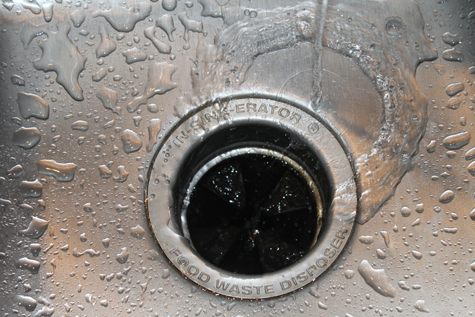Having a garbage disposal in your Hampton, Newport News or Poquoson home has many benefits from a more convenient and faster cleanup process to preventing future plumbing problems. Ultimately a garbage disposal in your kitchen eliminates the environment for bacteria to breed (in the trash can) and unpleasant odors. If you already have a garbage disposal or need a plumber to install a garbage disposal, it is important to know the straightforward do’s and don’ts of proper garbage disposal use, as well as the best ways to clean and operate your disposal. This week part 1 will cover the Do’s and Don’ts and next week will cover The Best Way to Use Your Garbage Disposal and Cleaning Tips.
Garbage Disposal Do’s
- Run the disposal with plenty of water
- Only grind foods with COLD water
- Flush the disposal and drain with HOT or COLD water, after grinding is completed
- Run the disposal regularly with water every few days, even if you have nothing to grind
*This prevents rust, corrosion and any obstructions from accumulating - Only grind a small amount of biodegradable food pieces at a time, “when in doubt, throw it out!”
- Run the disposal until grinding sound stops or until you only hear the motor and water running
- Clean your disposal 1-2x a month using ice, dish soap, Borax or baking soda.
*Avoid harsh chemicals such as bleach and caustic drain cleaners - Do ask a local plumber for professional advice on the best methods to maintain your drains to help keep them clean and flowing freely
Garbage Disposal Don’ts
- Don’t use hot water while grinding food. It’s okay to run hot water down the drain after you’ve used the disposal
- Don’t fill the disposal before turning it on. Keep the cuttings away from the disposal, in the base of the sink and feed them slowly into the grinder while running plenty of COLD water.
- Don’t put the following in your disposal
a. Grease, fat, coffee grounds, whole bones, clam shells, oyster shells or seeds
b. Fibrous materials ,such as corn husks, celery stalks, onion skins and artichokes
c. Expandable foods, such as pasta and rice
d. Potatoes or potato skins
e. Meats (raw or uncooked)
f. Fruit pits and rinds
g. Harsh chemicals such as, bleach, drain cleaners or caustic drain cleaners
h. Glass, China, Plastic, Metal, paper, bottle caps, tin, foil, utensils
i. Anything combustible
j. Cigarette butts
k. String, rocks, rubber bands, dentures, toys, etc.
